Pear varieties can be classified many ways (creamy/sandy, raw/cooking), but I choose to classify them into two distinct categories: European or buttery varieties and Asian varieties. European pears have been bred to be more aromatic with a smooth and buttery texture. Asian pears are crisp and have a milder flavor.
Related Articles
The two major types of European pears are the Anjou (sometimes called D'Anjou) and the Bartlett (or Williams). The Anjou variety is a hardy winter variety available from autumn through spring. The Bartlett variety is sweeter, but usually only available from late summer through autumn. The Bartlett withstands cooking well and is the variety most often used in canning and is also available as a dried fruit.
Other notable European pear varieties are the Bosc and the Comice. Bosc pears are firm but not crunchy, and its sturdy structure lends itself to cooking methods such as baking and poaching (as well as eating fresh). The Comice is often regarded as the sweetest and strongest "pear" flavored variety.
European pears are never ripened on the tree because they produce a mealy, gritty texture when allowed to do so. They are picked while they are still firm which also helps the delicate fruit to survive transportation. Store pears in the refrigerator to slow down the ripening process. A few days before you wish to eat the pears, take them out and allow them to ripen at room temperature. Placing pears in paper bags and rotating them each day can help speed ripening due to the trapped ethylene gas. Do not place pears in plastic bags because carbon dioxide could build up resulting in deterioration of the core of the fruit. When pears are ripe, the flesh at the stem gives a little when you lightly press down on it. Waiting until the middle is soft usually results in an overripe pear (because pears ripen from the core outward). After a pear is ripe, you may store it in the refrigerator for only a few days before the fruit dies and begins to deteriorate.
Asian pears
Asian pears are crisp and juicy but with less sweetness than their European counterparts. Unlike European pears, Asian pears are ripened on the tree and can be eaten immediately after picking. In most cases, Asian pears keep in the refrigerator for up to three months (and in the case of the 20th Century variety, up to six months), but if kept too long, they develop a strong wine-like flavor. The skin of Asian pears is quite delicate and sometimes they are packaged in individual foam containers to protect them. (Asian pears have a relatively limited supply and are usually more expensive, so the packagers take extra care to provide perfect looking pears to the market.)
When selecting Asian pears at the market, pick unblemished specimens that are uniform in shape. The pears should be firm and free of any soft spots.
Some properties of pears
The flesh of all pears oxidizes quickly after cutting. To prevent rapid browning, the pear should be cooked or rubbed with an acid (such as lemon, lime, or orange juice) or alcohol. For eating fresh, it is recommended to cut the pears immediately before serving.
Pears have a high water content and are useful for quenching thirst. In addition, they are rich in fiber (a fresh pear is about 3% dietary fiber by weight) and is a decent source of potassium.
Consuming unripe pears are said to have a laxative effect while ripe pears are reputed to be a diuretic and a sedative. Because pears contain a small amount of sorbitol (a sugar alcohol the body cannot process but bacteria in the digestive system can break down for energy), eating too many pears may result in some intestinal discomfort and flatulence.
European pears
Asian pears
Related Articles

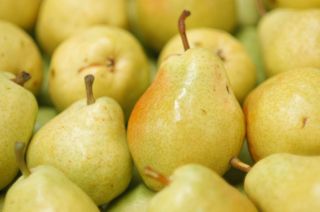
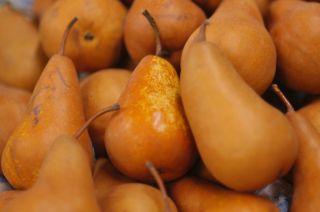
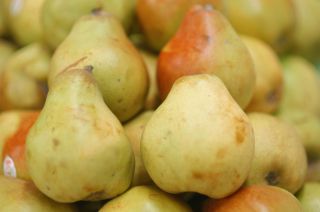
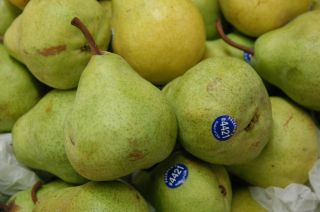
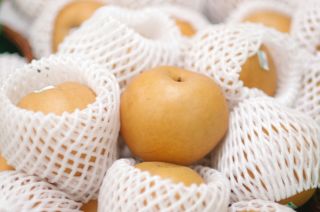
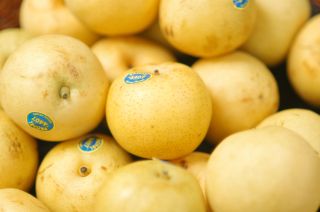
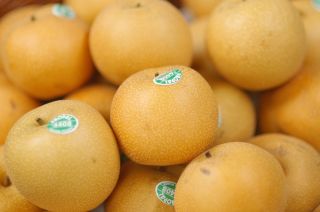

Thank you for giving us the 411 in such an easy package!
Keep up the fine work!
This dessert topping can be used for anything, but cheesecake is my favorite. It works best with Bartletts or Anjou -- I've never tried it with Asians (those don't last anywhere near long enough in my house!).
Best of luck,
Burr
http://s73.photobucket.com/albums/i233/rachel1919/ebay/?action=view&curre...jpg
http://s73.photobucket.com/albums/i233/rachel1919/ebay/?action=view&curre...jpg
Shannon
Shannon
Shannon, That sounds just like the pears that I am trying to figure out the name of. I live in Northern Florida. My pics are 2 up from your comment. All I know is that I have a few variations of these pears each is slightly different but they are all Asian pears. If you do a search for Asian pear trees many will show up. They are round and have the texture more like an apple than a pear. They are so crunchy that they are better off used for pies though mine are sweet enough to eat as long as they are chilled and peeled.
After much research I have decided that my grandfather's pear tree probably was a Kieffer Pear tree. I emailed some pear growers from Louisiana and also found an article from LSU about pears that grow in Louisiana. From that I narrowed it down to three possibilities - Kieffer, Pineapple, or Orient. One of the growers I wrote told me that the Kieffer was the most common pear tree planted in the south. My husband remembers his grandfather having a pear tree in southern Georgia that sounds exactly the same. So my best guess is Kieffer. Maybe that is what yours are too. I am in SC now, but I am planning on ordering a Kieffer for my yard. Thanks for responding,
Shannon
Hawaii girl
I grow these. very good taste
T. J. Cal
http://www.tandeecal.com/page10.htm